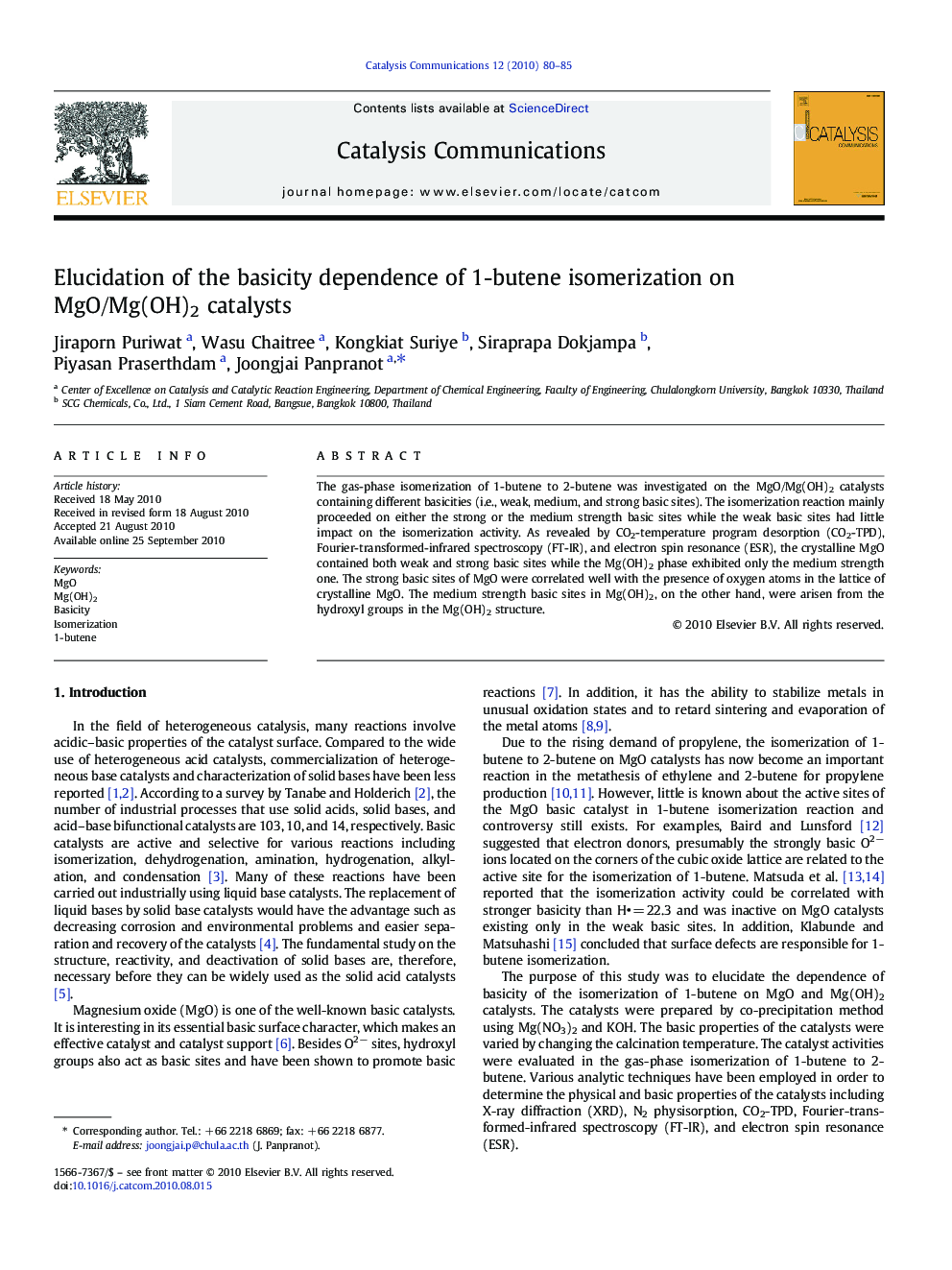| Article ID | Journal | Published Year | Pages | File Type |
|---|---|---|---|---|
| 51158 | Catalysis Communications | 2010 | 6 Pages |
The gas-phase isomerization of 1-butene to 2-butene was investigated on the MgO/Mg(OH)2 catalysts containing different basicities (i.e., weak, medium, and strong basic sites). The isomerization reaction mainly proceeded on either the strong or the medium strength basic sites while the weak basic sites had little impact on the isomerization activity. As revealed by CO2-temperature program desorption (CO2-TPD), Fourier-transformed-infrared spectroscopy (FT-IR), and electron spin resonance (ESR), the crystalline MgO contained both weak and strong basic sites while the Mg(OH)2 phase exhibited only the medium strength one. The strong basic sites of MgO were correlated well with the presence of oxygen atoms in the lattice of crystalline MgO. The medium strength basic sites in Mg(OH)2, on the other hand, were arisen from the hydroxyl groups in the Mg(OH)2 structure.
Graphical AbstractThe 1-butene isomerization activity mainly proceeded on the strong basic sites of MgO while the medium basic sites from hydroxyl groups were the responsible active sites for the Mg(OH)2 phase. The strong basic sites of MgO were correlated well with the presence of oxygen atoms in the lattice of crystalline MgO.Figure optionsDownload full-size imageDownload as PowerPoint slideResearch Highlights► The isomerization reaction mainly proceeded on either the strong or the medium strength basic sites while the weak basic sites had little impact on the isomerization activity. ► As revealed by CO2-temperature program desorption (CO2-TPD), Fourier-transformed-infrared spectroscopy (FT-IR), and electron spin resonance (ESR), the crystalline MgO contained both weak and strong basic sites while the Mg(OH)2 phase exhibited only the medium strength one. ► The strong basic sites of MgO were correlated well with the presence of oxygen atoms in the lattice of crystalline MgO. ► The medium strength basic sites in Mg(OH)2, on the other hand, were arisen from the hydroxyl groups in the Mg(OH)2 structure.
